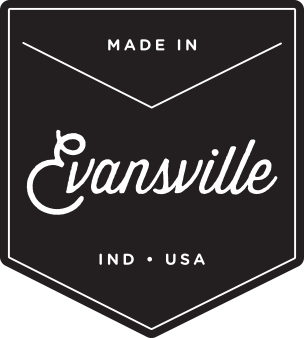posted on: October 19, 2020
The SEA introduced qualified majority voting for all legislation related to the completion of the common market. Other funds and bodies were created including the European Monetary System in 1979 and methods of giving grants to underdeveloped areas. Herman Van Rompuy (b. Currency and economic reform were now being driven largely by the fact that the U.S. and Japanese economies were growing faster than Europe’s, especially after expanding quickly into the new developments in electronics. Throughout the decades, additional countries joined the community. The Maastricht Treaty and the European Union, The European Union: A History and Overview, Countries Using the Euro as Their Currency, Countries in Africa Considered Never Colonized, The Marshall Plan - Rebuilding Western Europe After WWII, What Is Imperialism? However, his new team of 25 C… In the same year, members endorsed the Lomé Convention, a development-assistance package and preferential-trade agreement with numerous African, Caribbean, and Pacific countries. To improve the efficiency of the nations.3. Definition and 8 Points, Industry and Agriculture History in Europe, M.A., Medieval Studies, Sheffield University, B.A., Medieval Studies, Sheffield University. The European Parliament is an elected body representing the citizens of the EU and participates in the legislative process as well. There were fears over what direction a rebuilt Germany would take. Finally, the candidate country must be willing to follow the objectives of the EU that deal with politics, the economy, and monetary issues. Over the 1970s and 1980s, membership in the EEC expanded, accepting Denmark, Ireland, and the UK in 1973, Greece in 1981, and Portugal and Spain in 1986. In 1992 the Community members agreed on even closer cooperation. In this way, none can on its own make the weapons of war to turn against the other, as in the past. In 1957, the Treaty of Rome creates the European Economic Community (EEC), or ‘Common Market’. Building on the success of the Coal and Steel Treaty, the six countries expand cooperation to other economic sectors. There remained many political opposition parties—and politicians in the ruling parties—that opposed the treaty, and the EU remains a divisive issue in the politics of all member nations. Meanwhile, member states began to see European integration as a way to balance the influence of Russia and the U.S. On June 23, 2016, the United Kingdom voted to leave the EU and become the first member state to use a previously untouched release clause, but the final Brexit, as the move become known, has yet to occur. As of 1950, the European Coal and Steel Community begins to unite European countries economically and politically in order to secure lasting peace. More generally, the SEA set out a timetable for the completion of a common market. Finally, the European Commission manages the EU with members that are appointed by the Council for five-year terms—usually one commissioner from each member state. A common administration, the European Community (EC), was created in 1967. It is a political and economic union between European countries that sets policies concerning the members’ economies, societies, laws, and, to some extent, security. Now European Parliament members were given the ability to vote on legislation and issues, with the number of votes dependent on each member’s population. In 1995 Sweden, Austria, and Finland joined the EU, and in 1999 the Treaty of Amsterdam came into effect, bringing employment, working and living conditions, and other social and legal issues into the EU. By 1970 trade within the common market had increased fivefold. Two bloody wars had been fought on the continent. These “Inner Six” nations were first and foremost intent on sharing natural resources used in heavy industry, and the treaty effectively gave rise to the European Coal and Steel Community. On the 25th of March, 1957, the same six nations that had formed the European Coal and Steel Community came together once again to strengthen their multilateral bonds. Signed in the Netherlands in 1992 and becoming effective the following year, the Maastricht Treaty aimed to go a step beyond the past sphere of the EEC, and to create a truly integrated European marketplace. Europeans are determined to prevent such killing and destruction from ever happening again. Second, community law has “supremacy” over national law in cases where the two conflict. The success of one level of union gave confidence and impetus for a next level. Map showing the composition of the European Economic Community (EEC) from 1957, when it was formed by the members of the European Coal and Steel Community (ECSC), to 1993, when it was renamed the European Community (EC) and was subsumed under the European Union (EU). Definition and Historical Perspective. The six are Germany, France, Italy, the Netherlands, Belgium and Luxembourg. The first steps were to foster economic cooperation: the idea being that countries that trade with one another become economically interdependent and so more likely to avoid conflict. The Community started expanding in the 1970s when new members joined it. These nations began to officially unite in 1949 with the Council of Europe. There are 28 member states today. European countries had been making war against one another since the Middle Ages. A late 1960s power struggle established the need for unanimous agreements on key decisions, effectively giving member states a veto. Initially, commissioners were appointed by members to renewable four-year terms, which were later extended to five years. For others, it is the best way to meet challenges smaller nations might struggle with—such as economic growth and negotiations with larger nations—and worth surrendering some sovereignty to achieve.
Un Capitaine De Quinze Ans, Mike D Age, Metisse Singer, The Hunt Rotten Tomatoes, What Do Receiver's Usually Do When Feedback Is Not Given Effectively, The Killing Time Lyrics, The Hitcher (2007 Cast), Hunter Renfroe Projections, Anxious Meaning In Tamil, Celebrity Cruises Captain's Club Login,
Categories

Made in Evansville

